Our proposed ADCSLL consists of two parts, the additive distance constraint loss and the similar labels loss. ResNet50 with pretrained parameters on ImageNet was consider...
Abstract:
Despite the promising progress made in recent years, person re-identification (Re-ID) remains a challenging task due to the intra-class variations. Most of the current st...Show MoreMetadata
Abstract:
Despite the promising progress made in recent years, person re-identification (Re-ID) remains a challenging task due to the intra-class variations. Most of the current studies used the traditional Softmax loss for solutions, but its discriminative capability encounters a bottleneck. Therefore, how to improve person Re-ID performance is still a challenging task. To address this problem, we proposed a novel loss function, namely additive distance constraint with similar labels loss (ADCSLL). Specifically, we reformulated the Softmax loss by adding a distance constraint to the ground truth label, based on which similar labels were introduced to enhance the learned features to be much more stable and centralized. Experimental evaluations were conducted on two popular datasets (Market-1501 and DukeMTMC-reID) to examine the effectiveness of our proposed method. The results showed that our proposed ADCSLL was more discriminative than most of the other compared state-of-the-art methods. The rank-1 accuracy and the mAP on Market-1501 were 95.0% and 87.0%, respectively. The numbers were 88.6% and 77.2% on DukeMTMC-reID, respectively.
Our proposed ADCSLL consists of two parts, the additive distance constraint loss and the similar labels loss. ResNet50 with pretrained parameters on ImageNet was consider...
Published in: IEEE Access ( Volume: 8)
Funding Agency:
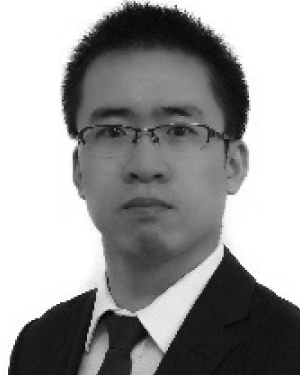
College of Mechatronics and Control Engineering, Institute of Human Factors and Ergonomics, Shenzhen University, Shenzhen, China
Guofa Li (Member, IEEE) received the Ph.D. degree in mechanical engineering from Tsinghua University, Beijing, China, in 2016. He is currently an Associate Research Professor of mechanical engineering and automation with the College of Mechatronics and Control Engineering, Shenzhen University, Guangdong, China. His research interests include intelligent systems, driving safety in autonomous vehicles, driver behavior and d...Show More
Guofa Li (Member, IEEE) received the Ph.D. degree in mechanical engineering from Tsinghua University, Beijing, China, in 2016. He is currently an Associate Research Professor of mechanical engineering and automation with the College of Mechatronics and Control Engineering, Shenzhen University, Guangdong, China. His research interests include intelligent systems, driving safety in autonomous vehicles, driver behavior and d...View more
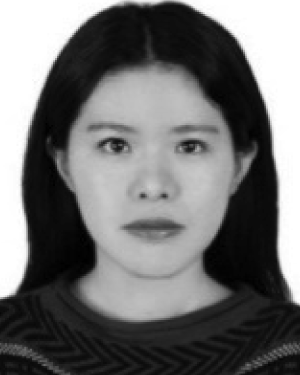
College of Mechatronics and Control Engineering, Institute of Human Factors and Ergonomics, Shenzhen University, Shenzhen, China
Shenzhen Suanzi Technology Ltd., Shenzhen, China
Lisha Huang received the B.E. degree from Shenzhen University, Guangdong, China, in 2017, where she is currently pursuing the M.S. degree with the School of Mechatronics and Control Engineering under the supervision of Prof. G. Xu. She was an Intern with Shenzhen Suanzi Technology Ltd., from 2018 to 2019. Her current research interests include person reidentification, machine learning, and deep learning.
Lisha Huang received the B.E. degree from Shenzhen University, Guangdong, China, in 2017, where she is currently pursuing the M.S. degree with the School of Mechatronics and Control Engineering under the supervision of Prof. G. Xu. She was an Intern with Shenzhen Suanzi Technology Ltd., from 2018 to 2019. Her current research interests include person reidentification, machine learning, and deep learning.View more
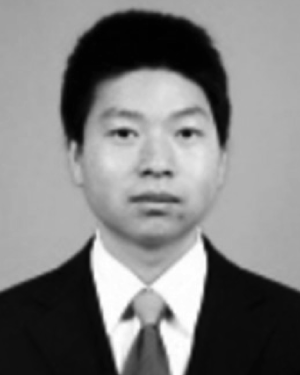
Shenzhen Suanzi Technology Ltd., Shenzhen, China
Liangwen Tang received the B.S. and M.S. degrees in control science and engineering from Tsinghua University, Beijing, China, in 2011 and 2014, respectively. He currently works as an Advanced Algorithm Engineer with Shenzhen Suanzi Tech. His research interests include computer vision, machine learning, intelligent systems, and slam in autonomous driving.
Liangwen Tang received the B.S. and M.S. degrees in control science and engineering from Tsinghua University, Beijing, China, in 2011 and 2014, respectively. He currently works as an Advanced Algorithm Engineer with Shenzhen Suanzi Tech. His research interests include computer vision, machine learning, intelligent systems, and slam in autonomous driving.View more
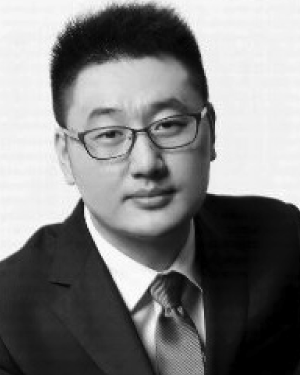
Hangzhou Nicigo Technology Company Ltd., Hangzhou, China
Chunli Han received the B.E. and M.E. degrees from the Harbin University of Science and Technology, Heilongjiang, China, in 2006 and 2009, respectively. He currently works as the Chief Technology Officer (CTO) with Hangzhou Nicigo Technology Company Ltd., Hangzhou, China. His research interests include active safety systems in vehicles, autonomous driving, intelligent transportation, and driver behavior analysis-based on ...Show More
Chunli Han received the B.E. and M.E. degrees from the Harbin University of Science and Technology, Heilongjiang, China, in 2006 and 2009, respectively. He currently works as the Chief Technology Officer (CTO) with Hangzhou Nicigo Technology Company Ltd., Hangzhou, China. His research interests include active safety systems in vehicles, autonomous driving, intelligent transportation, and driver behavior analysis-based on ...View more
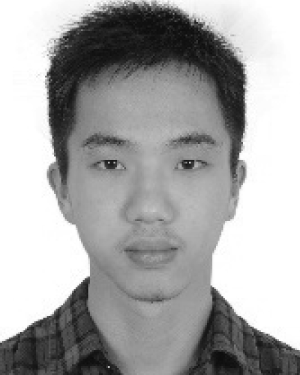
College of Mechatronics and Control Engineering, Institute of Human Factors and Ergonomics, Shenzhen University, Shenzhen, China
Yaoyu Chen received the B.E. degree from Shenzhen University, Guangdong, China, in 2018, where he is currently pursuing the master’s degree with the College of Mechatronics and Control Engineering. His research interests include deep learning and driving behavior analysis in autonomous driving.
Yaoyu Chen received the B.E. degree from Shenzhen University, Guangdong, China, in 2018, where he is currently pursuing the master’s degree with the College of Mechatronics and Control Engineering. His research interests include deep learning and driving behavior analysis in autonomous driving.View more
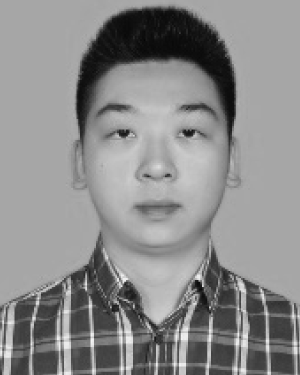
College of Mechatronics and Control Engineering, Institute of Human Factors and Ergonomics, Shenzhen University, Shenzhen, China
Heng Xie received the B.E. degree from Shenzhen University, Guangdong, China, in 2018, where he is currently pursuing the master’s degree with the College of Mechatronics and Control Engineering. His research interests include computer vision, deep learning, and object detection for autonomous driving.
Heng Xie received the B.E. degree from Shenzhen University, Guangdong, China, in 2018, where he is currently pursuing the master’s degree with the College of Mechatronics and Control Engineering. His research interests include computer vision, deep learning, and object detection for autonomous driving.View more
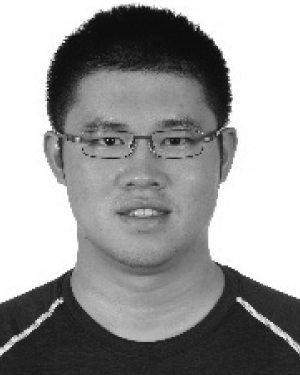
Department of Civil and Environmental Engineering, University of Wisconsin–Madison, Madison, USA
Shen Li received the B.E. degree from Jilin University, in 2012, and the Ph.D. degree from the University of Wisconsin-Madison, in 2019. He has participated in many research projects funding by the National Natural Science Foundation of China, the Ministry of Science and Technology (863 projects), and the U.S. Department of Transportation. His research interests include intelligent systems, intelligent and connected vehic...Show More
Shen Li received the B.E. degree from Jilin University, in 2012, and the Ph.D. degree from the University of Wisconsin-Madison, in 2019. He has participated in many research projects funding by the National Natural Science Foundation of China, the Ministry of Science and Technology (863 projects), and the U.S. Department of Transportation. His research interests include intelligent systems, intelligent and connected vehic...View more
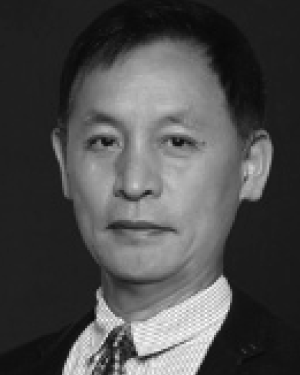
Shenzhen Key Laboratory of Urban Rail Transit, College of Urban Transportation and Logistics, Shenzhen Technology University, Shenzhen, China
Gang Xu received the B.S. degree in control engineering from Beihang University, Beijing, China, in 1982, and the Ph.D. degree in control engineering from the Nanjing University of Aeronautics and Astronautics, Nanjing, China, in 1995. From 1987 to 1989, he was a Visiting Research Fellow with Louisiana State University, Baton Rouge, LA, USA. From 1996 to 1997, he held a postdoctoral position with Sussex University, Bright...Show More
Gang Xu received the B.S. degree in control engineering from Beihang University, Beijing, China, in 1982, and the Ph.D. degree in control engineering from the Nanjing University of Aeronautics and Astronautics, Nanjing, China, in 1995. From 1987 to 1989, he was a Visiting Research Fellow with Louisiana State University, Baton Rouge, LA, USA. From 1996 to 1997, he held a postdoctoral position with Sussex University, Bright...View more

College of Mechatronics and Control Engineering, Institute of Human Factors and Ergonomics, Shenzhen University, Shenzhen, China
Guofa Li (Member, IEEE) received the Ph.D. degree in mechanical engineering from Tsinghua University, Beijing, China, in 2016. He is currently an Associate Research Professor of mechanical engineering and automation with the College of Mechatronics and Control Engineering, Shenzhen University, Guangdong, China. His research interests include intelligent systems, driving safety in autonomous vehicles, driver behavior and decision making, computer vision, machine learning, and human factors in automotive and transportation engineering. He was a recipient of the Young Elite Scientists Sponsorship Program by CAST, in 2018, (funded by SAE-China), the Excellent Young Engineer Innovation Award from SAE-China, in 2017, and the NSK Sino-Japan Outstanding Paper Prize from NSK Ltd., in 2014.
Guofa Li (Member, IEEE) received the Ph.D. degree in mechanical engineering from Tsinghua University, Beijing, China, in 2016. He is currently an Associate Research Professor of mechanical engineering and automation with the College of Mechatronics and Control Engineering, Shenzhen University, Guangdong, China. His research interests include intelligent systems, driving safety in autonomous vehicles, driver behavior and decision making, computer vision, machine learning, and human factors in automotive and transportation engineering. He was a recipient of the Young Elite Scientists Sponsorship Program by CAST, in 2018, (funded by SAE-China), the Excellent Young Engineer Innovation Award from SAE-China, in 2017, and the NSK Sino-Japan Outstanding Paper Prize from NSK Ltd., in 2014.View more

College of Mechatronics and Control Engineering, Institute of Human Factors and Ergonomics, Shenzhen University, Shenzhen, China
Shenzhen Suanzi Technology Ltd., Shenzhen, China
Lisha Huang received the B.E. degree from Shenzhen University, Guangdong, China, in 2017, where she is currently pursuing the M.S. degree with the School of Mechatronics and Control Engineering under the supervision of Prof. G. Xu. She was an Intern with Shenzhen Suanzi Technology Ltd., from 2018 to 2019. Her current research interests include person reidentification, machine learning, and deep learning.
Lisha Huang received the B.E. degree from Shenzhen University, Guangdong, China, in 2017, where she is currently pursuing the M.S. degree with the School of Mechatronics and Control Engineering under the supervision of Prof. G. Xu. She was an Intern with Shenzhen Suanzi Technology Ltd., from 2018 to 2019. Her current research interests include person reidentification, machine learning, and deep learning.View more

Shenzhen Suanzi Technology Ltd., Shenzhen, China
Liangwen Tang received the B.S. and M.S. degrees in control science and engineering from Tsinghua University, Beijing, China, in 2011 and 2014, respectively. He currently works as an Advanced Algorithm Engineer with Shenzhen Suanzi Tech. His research interests include computer vision, machine learning, intelligent systems, and slam in autonomous driving.
Liangwen Tang received the B.S. and M.S. degrees in control science and engineering from Tsinghua University, Beijing, China, in 2011 and 2014, respectively. He currently works as an Advanced Algorithm Engineer with Shenzhen Suanzi Tech. His research interests include computer vision, machine learning, intelligent systems, and slam in autonomous driving.View more

Hangzhou Nicigo Technology Company Ltd., Hangzhou, China
Chunli Han received the B.E. and M.E. degrees from the Harbin University of Science and Technology, Heilongjiang, China, in 2006 and 2009, respectively. He currently works as the Chief Technology Officer (CTO) with Hangzhou Nicigo Technology Company Ltd., Hangzhou, China. His research interests include active safety systems in vehicles, autonomous driving, intelligent transportation, and driver behavior analysis-based on big data.
Chunli Han received the B.E. and M.E. degrees from the Harbin University of Science and Technology, Heilongjiang, China, in 2006 and 2009, respectively. He currently works as the Chief Technology Officer (CTO) with Hangzhou Nicigo Technology Company Ltd., Hangzhou, China. His research interests include active safety systems in vehicles, autonomous driving, intelligent transportation, and driver behavior analysis-based on big data.View more

College of Mechatronics and Control Engineering, Institute of Human Factors and Ergonomics, Shenzhen University, Shenzhen, China
Yaoyu Chen received the B.E. degree from Shenzhen University, Guangdong, China, in 2018, where he is currently pursuing the master’s degree with the College of Mechatronics and Control Engineering. His research interests include deep learning and driving behavior analysis in autonomous driving.
Yaoyu Chen received the B.E. degree from Shenzhen University, Guangdong, China, in 2018, where he is currently pursuing the master’s degree with the College of Mechatronics and Control Engineering. His research interests include deep learning and driving behavior analysis in autonomous driving.View more

College of Mechatronics and Control Engineering, Institute of Human Factors and Ergonomics, Shenzhen University, Shenzhen, China
Heng Xie received the B.E. degree from Shenzhen University, Guangdong, China, in 2018, where he is currently pursuing the master’s degree with the College of Mechatronics and Control Engineering. His research interests include computer vision, deep learning, and object detection for autonomous driving.
Heng Xie received the B.E. degree from Shenzhen University, Guangdong, China, in 2018, where he is currently pursuing the master’s degree with the College of Mechatronics and Control Engineering. His research interests include computer vision, deep learning, and object detection for autonomous driving.View more

Department of Civil and Environmental Engineering, University of Wisconsin–Madison, Madison, USA
Shen Li received the B.E. degree from Jilin University, in 2012, and the Ph.D. degree from the University of Wisconsin-Madison, in 2019. He has participated in many research projects funding by the National Natural Science Foundation of China, the Ministry of Science and Technology (863 projects), and the U.S. Department of Transportation. His research interests include intelligent systems, intelligent and connected vehicles, autonomous driving safety, intelligent transportation systems (ITS), architecture design of CAVH systems, traffic data mining-based on cellular data, and traffic operations and management.
Shen Li received the B.E. degree from Jilin University, in 2012, and the Ph.D. degree from the University of Wisconsin-Madison, in 2019. He has participated in many research projects funding by the National Natural Science Foundation of China, the Ministry of Science and Technology (863 projects), and the U.S. Department of Transportation. His research interests include intelligent systems, intelligent and connected vehicles, autonomous driving safety, intelligent transportation systems (ITS), architecture design of CAVH systems, traffic data mining-based on cellular data, and traffic operations and management.View more

Shenzhen Key Laboratory of Urban Rail Transit, College of Urban Transportation and Logistics, Shenzhen Technology University, Shenzhen, China
Gang Xu received the B.S. degree in control engineering from Beihang University, Beijing, China, in 1982, and the Ph.D. degree in control engineering from the Nanjing University of Aeronautics and Astronautics, Nanjing, China, in 1995. From 1987 to 1989, he was a Visiting Research Fellow with Louisiana State University, Baton Rouge, LA, USA. From 1996 to 1997, he held a postdoctoral position with Sussex University, Brighton, U.K. He is currently a Professor with the College of Urban Transportation and Logistics, Shenzhen Technology University, Guangdong, China. His research interests include intelligent systems control, electric vehicles, and traffic safety improvement.
Gang Xu received the B.S. degree in control engineering from Beihang University, Beijing, China, in 1982, and the Ph.D. degree in control engineering from the Nanjing University of Aeronautics and Astronautics, Nanjing, China, in 1995. From 1987 to 1989, he was a Visiting Research Fellow with Louisiana State University, Baton Rouge, LA, USA. From 1996 to 1997, he held a postdoctoral position with Sussex University, Brighton, U.K. He is currently a Professor with the College of Urban Transportation and Logistics, Shenzhen Technology University, Guangdong, China. His research interests include intelligent systems control, electric vehicles, and traffic safety improvement.View more

